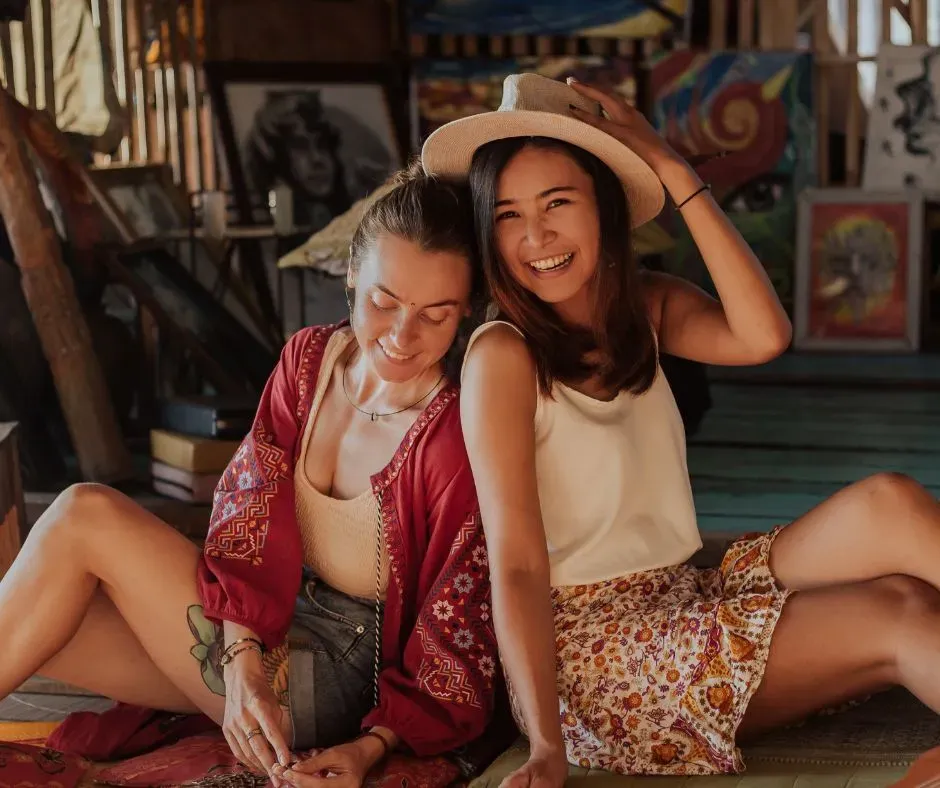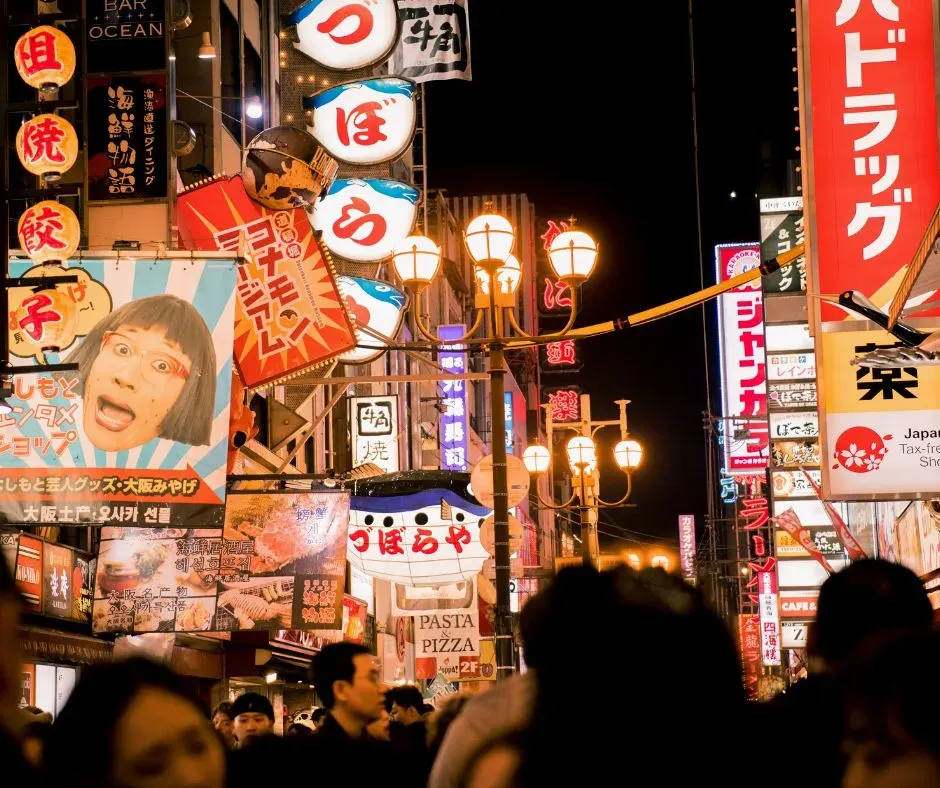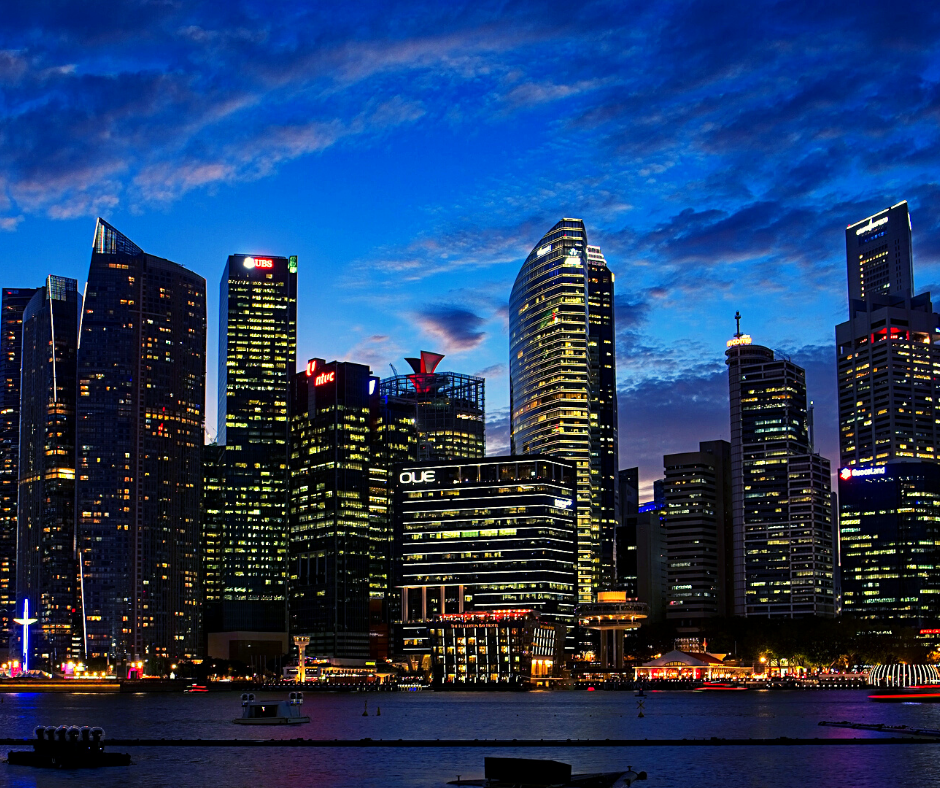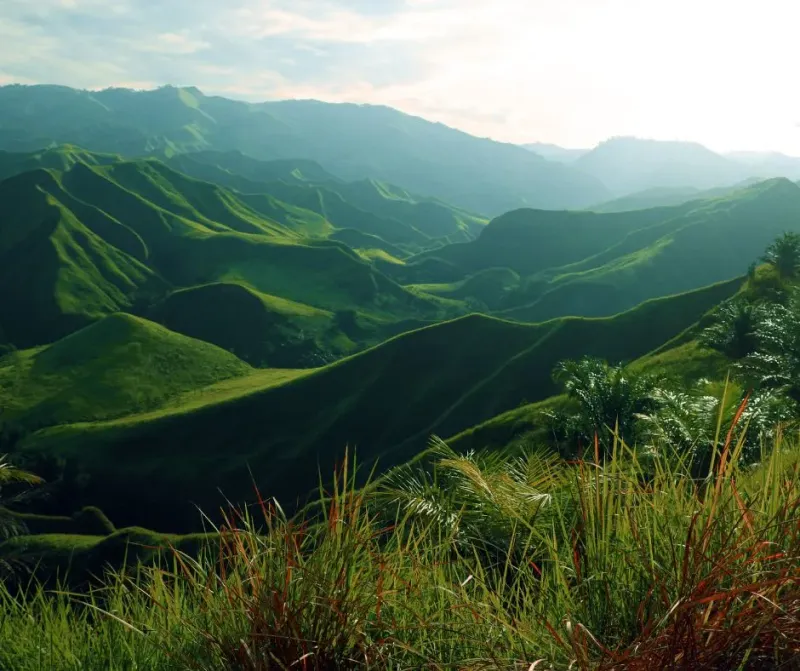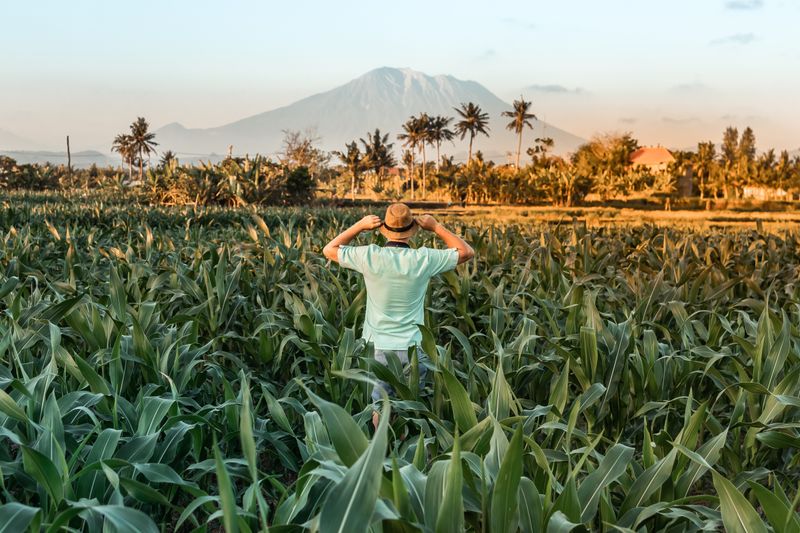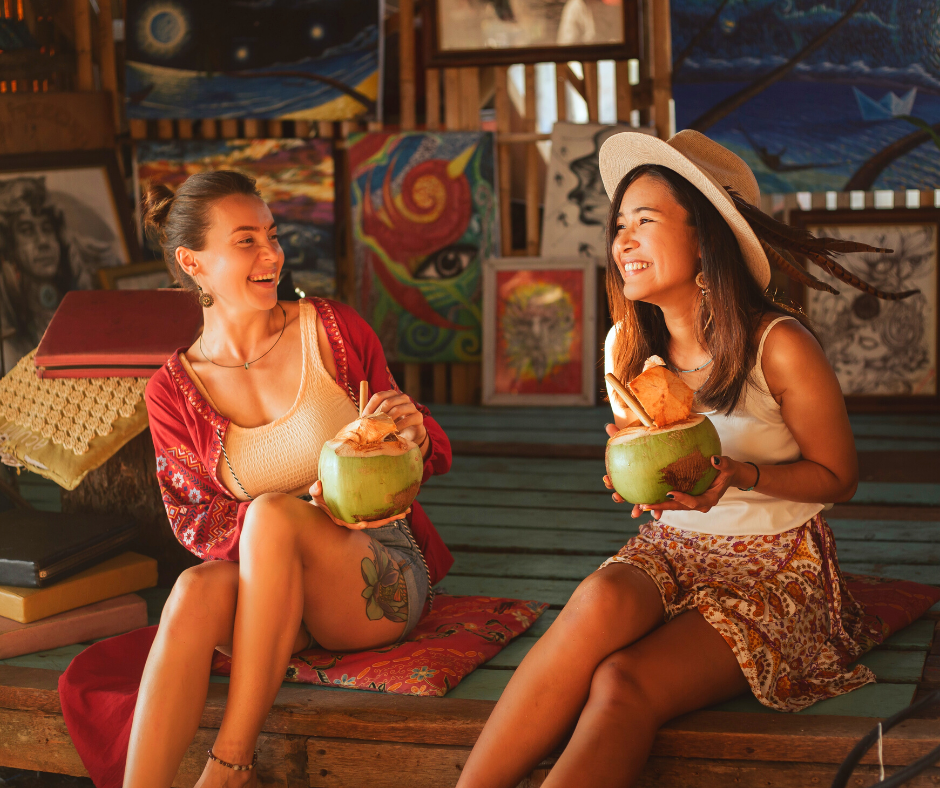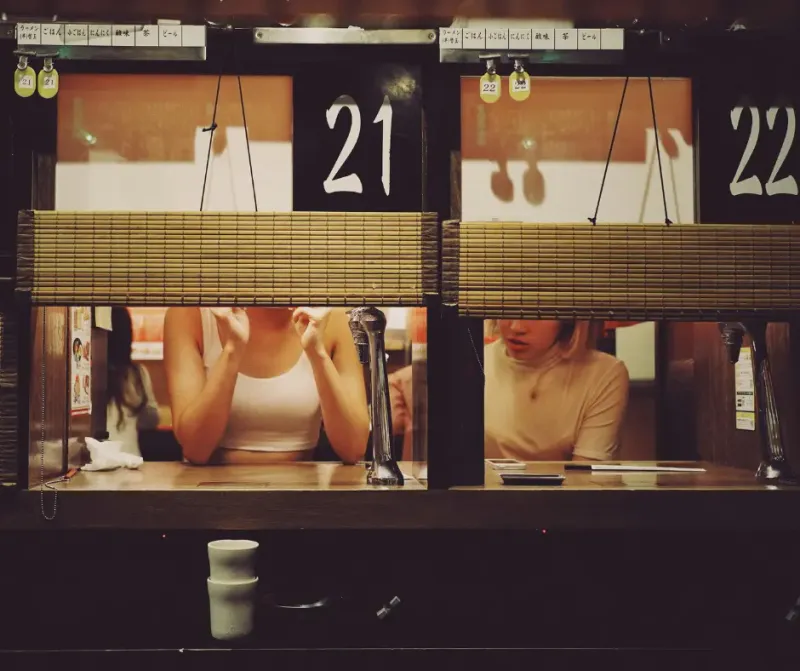[Updated September 2025] Thanks to our team members Jomarie and Ninotchka, this guide has been updated and is packed with local tips.
Palawan, Bohol, and Boracay are just three of many marvelous places in this exotic island paradise. Breathtaking volcano landscape, dense rainforests, and crystal clear waters on white-powdery beaches are just a few of the reasons why thousands of honeymooners travel to the Philippines every year.
The Pacific island archipelago consists of more than 7,000 islands, which are home to modern, innovative hubs like Manila and Cebu, as well as remote island gems such as Palawan. Equip yourself with a local SIM card to ensure stable internet, rent a scooter for island excursions, and reward yourself with a fresh coconut while watching the sunset.
🌱 Travel health insurance for the Philippines
🇵🇭 Entry requirements for the Philippines
- Visa: Many passport holders can stay in the Philippines visa-free for up to 30 days.
- Digital Nomad Visa: Nothing more than rumors yet. Once it is officially announced, we will update it here.
✈️ How to get to the Philippines
- Plane: There are many Philippine Airports scattered across the islands with international and domestic flight connections. Ninoy Aquino International Airport (MNL) is the hub serving Manila.
- Manila Airport is well-connected to Asia, North America, and Oceania. However, the only direct flight connection between Europe and Manila Airport is from and to Istanbul.
- Cebu Airport (CEB) connects the Philippines and Europe through direct flights from and to Amsterdam. Other parts of the world are connected via Singapore, Hong Kong, and Dubai.
- And many other international airports that connect the Philippines with North America, Europe, and Asia. - Airport transfer: It's possible to get an airport transfer by taxi or Grab for €5 to €8.
🚌 Public transport
Public transportation in Metro Manila includes taxis, ride-hailing services (such as Grab, InDrive, JoyRide, PeekUp, Movelt, and Angkas), buses, trains like Light Rail Transit (LRT) and the Metro Rail Transit (MRT), and jeepneys.
- LRT/MRT: The transit system consists of three lines, and you can purchase a single-use ticket or a Value Card (SVC) for an initial fee of ₱30 (€0.52), allowing for multiple uses.
- Buses: The bus system is a mix of distance-based lines and zonal-based lines. Taking the bus is generally affordable, with fares starting at €0.17 for the first 5 kilometers.
Buses connect different parts of Metro Manila and connect to North, Central, and South Luzon. - Grab: Grab is available in the Philippines, and for a small booking fee of ₱ 70 (approximately €1.20), it is a reasonable choice. Cheaper options are InDrive and JoyRide.
- Motorcycle ride-hailing services: Angkas, Movelt, and JoyRide offer rides at a lower cost than Grab and other car ride-hailing services.
- Taxis: Usually, taxis are air-conditioned and metered. Tourists report constant price scams. It's best to keep small notes with you, as the driver will likely have no change. It is more advisable to use ride-hailing apps, such as Grab and co.
- Jeepneys: The colorful vehicles are customized jeeps that operate like buses, following a designated route. With ₱8 (€0.14) for a short-distance ride, it is a common and cheap way of transportation.
- Walking: Walking in major business, shopping, and tourist areas is generally safe. However, there are a few dodgy neighborhoods and suburbs in every city.
🏡 How to find a place
- Airbnb: You can find many foreign-owned hotels on Airbnb. Additionally, local hosts use Airbnb, but the listings are not detailed and vary significantly in quality. You find decent places in Metro Manila or Cebu, but the variety in the countryside or on a remote island is less.
- Hotels: Depending on how long you stay in one location, it might be worth checking out hotels and backpacker hostels.
🏘 Where to stay in Metro Manila
The metropolitan area of Manila, also known as Metro Manila, comprises 16 cities, including Manila, with Makati, Taguig, and Pasay located in the south, and Quezon in the northeast.
- Manila: The capital of the Philippines. Manila has Intramuros, a well-known historic walled city, a preserved historic area famous for its atmosphere, architecture, and historical sites, including Fort Santiago, San Agustin Church, and Manila Cathedral. The area is home to hotels and condominiums, conveniently situated near restaurants and shops.
- Makati: Centrally located within the modern business district of Manila, Makati offers a wealth of attractions, as well as short distances to entertainment venues, shopping malls, and restaurants. You find condos and serviced apartments for around €500 to €700 per month.
- Taguig Bonifacio Global City: The urban development district BGC has evolved into an upper-middle-class neighborhood, characterized by high-rise residential towers, multinational companies, upscale restaurants, and parks that enhance the quality of life. Many modern apartments have attractive gym and swimming pool facilities, good security, and play areas for children.
- Pasay: For those seeking convenience, condominiums, and serviced apartments, Pasay is just a quick 5- to 10-minute drive from the airport. You find mostly restaurants, cafés, and shopping malls, such as the Mall of Asia (MOA), as well as the biggest IKEA in the world. Pasay is famous for its sunset in the bay area.
- Quezon: This area, situated northeast of Manila, has evolved into a significant hub in its own right, providing easy access to other parts of Metro Manila. You find serviced apartments, hotels, malls, gastronomy, and entertainment here, as well as hotels ranging from budget-friendly to luxurious.
🧑🏻💻 Where to work from in Metro Manila
Coworking spaces
- Manila: Mind Zone is your place if you are looking for a community-focused, modern, and hip coworking space. Fast wifi, high-quality and ergonomic interior in a safe and convenient location. Mind Zone offers individual pricing options. A 30-day membership costs €86.
- Manila: 933 Creatives comes with a bright, professional, and modern atmosphere. The space is pet-friendly, and you might get the chance to cuddle furry friends during your lunch break. A monthly coworking membership costs €104.
- Makati & Taguig Bonifacio Global City: WeRemote offers coworking and community spaces in Makati and BGC. The colorful design, private phone booths, open seating, and well-equipped pantry make this spot a great place to work. Day passes start at €5 and month passes at €44.
Coffee shops
- Manila: Although you will find thousands of great coffee shops to work from, one that stands out is The Den near Chinatown. Besides coffee and supplies, you find the Hub Make Lab and a culture and creative hub here.
- Makati: Our team member Ninotchka loves The Curator, The Fat Seed Cafe + Roastery, and SGD Coffee Bodega.
- Taguig Bonifacio Global City: Toby’s Coffee is a trendy local coffee chain with many branches in BGC and Makati. Some branches even have a lively, social vibe, which makes it a great spot to experience the local coffee culture. If you are lucky, you will meet our team member, Jomarie, who often works from the Makati branch.
- Quezon: GotBaked is a trendy roastery and coffee bar offering delicious coffee specialties to help you start your day with a caffeine boost. Wifi is stable and fast, and you can even borrow an extension cord, in case you need it.
🏘 Where to stay in Siargao
The tear-drop-shaped island of Siargao is a surfer's paradise with a growing digital nomad community. Our friend Sergio Sala shares his experiences on YouTube. Siargao is ideal for those seeking an exotic island vibe, complete with scooter excursions through a lush tropical landscape. Some say Siargao is like Bali a few decades ago.
- General Luna: Generally known as a surfer town thanks to the famous Cloud 9, General Luna offers surfing, cycling, BBQ and karaoke, massage and spa places, and beautiful wild beaches.
- Santa Fe: A quiet residential town in the north of Siargao and part of the General Luna municipality. Santa Fe is more peaceful than General Luna, but it is an up-and-coming area for real estate.
🧑🏻💻 Where to work from in Siargao
Coworking spaces
- Coco Coworking: This is your island coworking space near Santa Fe, featuring a community, events, specialty coffees, pool access, ergonomic chairs, and high-speed internet surrounded by beautiful, lush nature.
- Alter Space: Located north of General Luna, this colorful coworking space offers open-seating workspace, air conditioning, drinks, and snacks. The space is rather small, with small workstations, but it comes with a strong internet connection (fiber and Starlink).
Coffee shops
- The Ohm Cafe: Located north of General Luna, this establishment serves delicious and healthy food, offers cozy spots to work from, a pool, and sun loungers.
- Brunch Spot: Enjoy delicious breakfast, lunch, or in-between snacks, specialty coffees, and ample plugs to squeeze in a bit of laptop time. Located in General Luna.
🏘 Where to stay in Cebu
Metro Cebu, the metropolitan area of Cebu City, was once a central trading hub between Asia and Europe. Today, Cebu is renowned for its majestic landscapes and vibrant underwater worlds, which attract divers, surfers, and nature enthusiasts alike.
- Cebu City: The city center is a unique blend of traditional Filipino culture and the modern world. You will find new commercial districts with business hubs and shopping malls adjacent to old buildings and traditional museums. The city is surrounded by white sand beaches and offers great weekend trips in nature.
- Lapu-Lapu City: A perfect blend of business and pleasure is Lapu-Lapu City. Here, you have great diving spots and public beaches, as well as economic zones.
🧑🏻💻 Where to work from in Cebu
Coworking spaces
- KMC Skyrise: The tropical-inspired shared spaces provide a fun and fresh working environment, offering comfortable seating in ergonomic chairs. Another pro is the on-site IT support for any technical issues. A dedicated desk for one month costs €172, which includes access to all KMC Coworking locations throughout the Philippines, 24/7 unlimited access, webinars, office equipment, and meeting rooms.
- Nomads Hub: The boutique coworking space is a professional and modern venue, offering high-speed WiFi, unlimited coffee and iced tea, a lounge area, and an on-site a la carte menu. The monthly coworking rate is €78.
Coffee shops
- Night Owl Work Café: For a small fee of ₱25, you can have a productive working day in a charming atmosphere. The menu ranges from Bowls and Pasta dishes to Cakes and donuts.
🏘 Where to stay in Palawan
- Puerto Princesa: Situated in the western section of the Philippines, Puerto Princesa is known for being a laid-back, exceptionally clean, and safe city. You will find stunning beaches, lush rainforests, and healthy marine ecology. Please note that transportation may be limited.
- El Nido: Known for its dramatic limestone cliffs, turquoise waters, and hidden lagoons, El Nido is a true tropical paradise. Join island-hopping tours to discover secret beaches, colorful snorkeling spots, and stunning caves tucked away from the crowds. Whether you’re swimming, kayaking, or just soaking in the views, every moment feels magical.
- Coron: A paradise for divers and adventurers, Coron is famous for its sunken shipwrecks, crystal-clear lakes, and dramatic limestone cliffs. Explore hidden lagoons, snorkel over vibrant coral reefs, or simply soak in the breathtaking scenery. The island is a dream for both thrill-seekers and nature lovers.
🧑🏻💻 Where to work from in Palawan
Coworking spaces
- Think Space: Think Space is a comfortable workplace with a welcoming atmosphere of like-minded nomads. In addition to all professional amenities, you can enjoy unlimited coffee and a high-speed internet connection. Monthly membership costs €69.
Coffee shops
- Gold Cup Coffee Roasters: At two locations, you can find hand- and machine-brewed coffee, along with your choice of high-quality single-origin beans. Wifi is strong enough for some working sessions as well.
🚊 How to travel around
- Plane: If you plan island-hopping, you can travel by plane. Manila, as a significant hub, links most of the country's major destinations.
Ferry: For shorter inter-island trips, you might have to take a ferry to get around. You can find several different operators with regular routes between Manila and other rural areas. Tickets can be bought at the pier upon departure. - Bus: Traveling by Bus around the Philippines can be nerve-wracking and time-consuming. If you are not in a rush, this might still be a cheap option, and buses are generally air-conditioned and reasonably new. The larger operators, such as Victory Liner or Philippine Rabbit, are bookable in advance.
🎖Must see
- Boracay: One of the islands the Philippines is famous for is Boracay, known for its snow-white beaches. The island has a length of only 7 km, but it is renowned for its 4 km beach, as well as beachside restaurants, bars, and options for clubbing. You can book a flight from Manila to Caticlan Airport, and you can go to Caticlan Jetty Port to ride a boat. Usually, if you have pre-booked hotels with airport transfers, they will assist you door-to-door from the airport to the hotel and vice versa.
- Banaue Rice Terraces: Banaue is located on Luzon Island in the northern Philippines. Some of the mountains have been used as farmland for more than 2,000 years. The mountain area is filled with rice terraces and lush forests. One of the most popular and beautiful rice terraces is called the Hapao terrace. It is located near the Hapao village and a one-hour hike from Banaue. The best way to get to Banaue is by bus. There are routes from Manila, Baguio, and Sagada. The route from Manila to the terraces takes about 9 hours.
- Mayon Volcano: Mount Mayon is the most iconic volcano in the Philippines due to its distinctive cone shape. Located in the province of Albay, the 2,462-meter-high volcano is still active and has had up to 50 eruptions in the past decades. Take the plane to Bicol or Legazpi to get to Mayon. Alternatively, you can take the bus. The ride from Manila to Legazpi is approximately 9 hours.
- Puerto Princesa Underground River: The national park located in the north of Palawan is known for its diverse biodiversity. Follow the Sabang River in a paddleboat to enter the underground water paths and caves.
💡 Good to know
- Internet: The average speed for fixed broadband in the Philippines is 87.13 Mbps for downloads and 84.78 Mbps for uploads. The Internet connection can be nerve-wracking, especially on smaller and more remote islands. It's advisable to have a SIM card with you for emergencies.
- SIM cards: Telecommunication providers use the same cable, and there is no significant difference. Check local offers from prepaid SIM card providers such as Smart and Globe, as they typically offer the best coverage.
- Sockets: Type A, B, and C.
- Safety: Manila has a bad reputation, and yes, you should exercise general caution, as there is a high level of violent crime. However, tourists aren't the focused target.
- Climate: The Philippines has five distinct types of climates. Tropical rainforest, tropical monsoon, tropical savanna, humid subtropical, and oceanic. The climate is characterized by relatively high temperatures, oppressive humidity, and plenty of rainfall. The rainy season is from June to November. The best time to travel is between December and February.
- Currency: The Official currency is the Philippine Peso (PHP). €1 is around ₱68.
- Digital nomad community: Probably the easiest way to get in touch with other digital nomads is by joining a coworking space. Additionally, check Facebook groups, for example, Digital Nomad Philippines.
🚧 What to avoid
- Slums: Walking through slum districts, such as Tondo or Smokey Mountain, or any dark streets, should be avoided. Don't walk alone in the dark, and avoid dark corners, streets, and overland roads on islands.
- Driving: Unless it's absolutely necessary, it is recommended not to drive in Manila and other big cities. It is definitely fun to rent a scooter on islands such as Palawan and Siargao.
- Drugs: The penalties for drug abuse are severe. Even a small amount of any drug leads to mandatory prison.
🚴🏻♀️ How to stay healthy
Stay active
- Gym: There are gyms and CrossFit all over the Philippines. You can find local gyms on every island and in every smaller town for a reasonable price.
- Yoga: You find a good range of English-speaking yoga retreats and yoga studios.
- Running: Many people jog together in the mornings and evenings, which makes it an excellent opportunity to stay active while also meeting new people.
- Canyoneering: Canyoneering to Kawasan Falls in Badian is one of the more spectacular adventures in Cebu. Getting there means witnessing the unbelievably clear, turquoise-blue waters of Badian, lush forests, and breathtaking nature. Several tour companies offer guided tours for around €40 per person.
- Watersports: The Philippines offers numerous excellent spots for diving and snorkeling, such as the dive sites in Moalboal, near Cebu, or Pescador Island. With over 30 diving sites, another diving heaven is close to the small island of Malapascua.
- Stay hydrated: Philippine temperatures can reach up to 39 degrees, so be sure to stay hydrated and drink plenty of bottled water throughout the day.
Health Risks
- Water Quality: You should not drink tap water in the Philippines
- Air Quality: The air quality in the Philippines is moderate.
⚓️ Long-stay visas & residency
- Digital Nomad Visa: Rumors have circulated about a Digital Nomad Visa, but it hasn't been officially launched yet.
